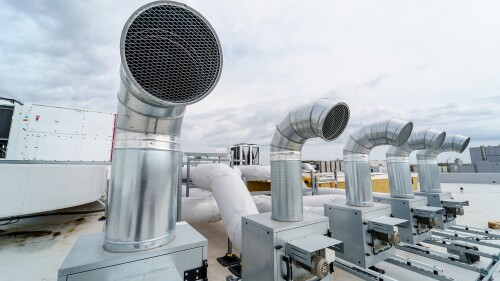This article is republished with permission from REITCafe.
Last week, Yahoo became the most recent large tech company to announce layoffs and office closures as it explores alternatives for its web business. Moves like this highlight the growing issue of sublease space among tech and energy companies, whose expansion drove demand for office space in recent years. Are new availabilities relieving tight conditions or a sign of something more severe?
To date, U.S. office market fundamentals have been improving. Overall office vacancy dropped to 13.9 percent at year-end 2015 from 14.7 percent one year earlier, and overall weighted average asking rents climbed 4.4 percent during the year, according to Cushman & Wakefield. The company notes that rents increased in 72 of the 87 markets it follows during 2015.
The energy sector downturn began when oil prices started to decline 19 months ago, but the impact on office markets has been more recent. Energy companies have cut thousands of jobs, and many are moving or downsizing. In Houston, overall vacancy climbed to 13.8 percent at year-end 2015 from 11.9 percent one year earlier, according to data from Cushman & Wakefield, and sublease space grew from 1.0 percent of overall vacancy to 2.1 percent during this time. Savills Studley recently reported more significant Houston availabilities of 7.6 million square feet (706,000 sq m) at year-end 2015, up from 4.5 million square feet (418,000 sq m) one year earlier.
| TREPP-i Survey Loan Spreads (50–59% LTV)* |
| This Week | Previous Week | Previous Month | End 2015 | End 2014 | |
| Industrial | 169 | 170 | 161 | 163 | 138.5 |
| Multifamily | 168 | 165 | 170 | 168 | 139.8 |
| Office | 175 | 180 | 164 | 168 | 148 |
| Retail | 169 | 170 | 165 | 168 | 139.8 |
| Average Spread | 170.25 | 171.25 | 165.00 | 166.75 | 141.5 |
| 10-year Treasury Yield** | 1.84 | 1.92 | 2.15 | 2.27 | 2.17 |
New construction is part of the issue. Most new developments are significantly preleased, but businesses that previously might have kept leased space while expanding into new construction are now occupying their new buildings and returning leased space back to the market.
The energy sector downturn has implications for firms that financed drilling and other projects in energy markets. Wells Fargo and JP Morgan Chase have already increased their reserves for energy sector losses, and other financial institutions will soon be dealing with losses.
Tech sector markets remain hot, but global economic turbulence is increasing uncertainty. Apple’s Tim Cook noted that two-thirds of the company’s revenue is generated outside the United States and that the company has experienced short-term volatility in its Greater China region. Apple does not rank among troubled tech firms. Along with Google, it has a seemingly insatiable appetite for new space. San Jose’s city council approved plans for Apple to develop up to 4.15 million square feet (385,500 sq m) of office space over 15 years in north San Jose. This space is in addition to its spaceship campus under construction in Cupertino, California.
Nevertheless, sources report that sublease space in the San Francisco Bay area has grown to about 2 million square feet (186,000 sq m). Companies like Twitter and Dropbox have made space available for sublease, but demand for their sublease space has been strong, with companies like Lyft, Stripe, and Affirm quickly snapping it up. Even with an increase in available sublease space, overall office vacancy in San Francisco decreased during 2015 and was just 5.9 percent at year-end, according to Cushman & Wakefield. Rent growth remains strong.
Many office real estate investment trusts (REITs) are heavily invested in tech and energy markets. So far in 2016, office REIT returns are down 10.32 percent and have significantly underperformed the FTSE NAREIT All Equity REIT average of –3.81 percent. Boston Properties (BXP), the largest office REIT with a portfolio concentration in Boston, New York, San Francisco, and Washington, D.C., is down 8.1 percent during 2015, even after its stock moved up on positive earnings news this week.
Sublease space is growing in both tech and energy markets, but the implications for metro areas that depend on these industries are different. Oil prices have been down for a prolonged period with no sign of a rebound. Oil markets are more diversified than they were in the past, but office vacancy is increasing with limited options to backfill vacated space. In contrast, demand to fill vacated space in tech markets remains significant, but could quickly deteriorate if financing for these companies dries up. New construction also is a factor for both tech and energy markets. Ultimately, office markets with heavy concentrations of tech and energy tenants warrant careful monitoring.
* TREPP-i Survey Loan Spreads levels are based on a survey of balance sheet lenders. For more information, visit Trepp.com.
** - 10 yr. Treasury Yield as of 2/5/2016.




